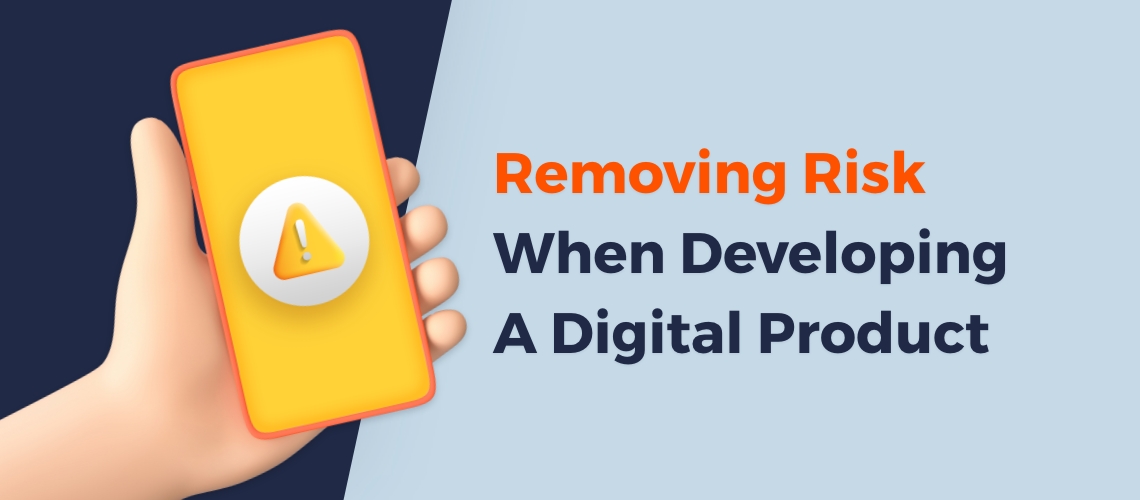6 Do’s and Don’ts to Remove Risk for Digital Products
Modern Logic hosted an interactive discussion on Thursday, May 12th, Removing Risk When Developing Your Digital Products. We thank our partners who joined in the discussion: Lighter Capital’s Caitlin Goetze, MESA’s Todd Krautkremer, Kent Lillemoe, Beta’s Tiffany Singroy, as well as our own team members as they talked about ways to avoid risk.
Removing risk saves precious money and time, allowing you to pursue your priorities and use your resources wisely. Our team shares their top Do’s and Don’ts for risk in digital product development.
DO: Bet on the Right Debt
“Debt isn’t bad,” our CEO, Dustin Bruzenak explains. “Debt can be good if you accelerate with that debt, and that’s especially true of technical debt.” It’s not a matter of if, but when you’ll make that bet.
DON’T: Bet on New Tech
Tried and true saves you money in the long run. Dustin explains, “Founders often have preconceived ideas about technology that we need to deprogram a little bit from a business perspective.” For example, technical co-founders sometimes pick a language for development because it’s cool and hip. This will quickly backfire, and may even force you to rewrite from scratch (a costly mistake). Basic isn’t boring! The Modern Logic team recommends established tech stacks that can be built upon and maintained for a long time. If you choose a language that only three people in your city know, and they all charge $300, you’ll probably wish you’d stuck with JavaScript.
DO: Invest Funds in an Experienced Team
Working with an agency like Modern Logic provides the expertise of full-time designers and developers that you can’t hire full time. You’ll get the work of 5-10 experienced people for the amount of money that gets you only two people full time. It leverages your resources and removes your risk. Low risk is worth spending for.
DON’T: Spend Funds on Unnecessary Features
“Pragmatism is one of our core values,” says Engineering Manager Andy Rahn. “We work with founders and product owners to introduce realism into their product. Let’s create a tech roadmap that’s worth betting your money on. Often, we work with clients to do a product plan that is a fraction of what they thought they wanted to get- but 80% of the waste in development comes from building things people don’t truly need.”
For example, Most mobile apps have 20-40 features, and the average user just does 2-3. They make a purchase decision on 5-10.
DO: Prioritize A/B Testing and Prototypes
Director of Client Services, Chip Pedersen, has worked at Apple, Microsoft, and spent 21 years in the game industry. His most important takeaway? The importance of early testing. “In gaming, we’d often create a simple, quick prototype just to see if people liked it. If they don’t, we completely scrap it,” Chip explains. No resources are wasted polishing an idea without potential. A/B testing will show you whether people like a feature or not, and also provide important information that can make you more money in the long run. “We had one game we were sure people would pay our monthly fee for. But, when we put it out, the public told us they’d rather watch ads. The game we thought would be ad-based, people were willing to pay the premium for. Audiences tell you what they want!”
DON’T: Keep Up with the Joneses (or Zuckerbergs)
“I’ve seen a Fortune 500 company spend $80,000 on a single animation,” Dustin tells us. “Sure, that works for them, because they’ve got the budget. Often, we see founders who look at something like that, and then pin their concept of quality to apps like TikTok, Instagram, or Facebook. These apps have development budgets for hundreds of millions of dollars or more. They can’t do that comparison. They’re listening to Elon Musk who says the product must be perfect, but ignoring the fact that he started off with $300 million. You aren’t Elon Musk!” Instead, get your product to market quickly and let the market realities design what you really need.
Specifically, our team has found that animation, custom control, and custom components are overvalued. You’ve got what you truly need if it looks good, works well, and people know how to use it.
